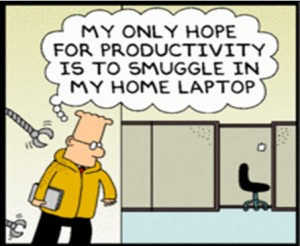What’s New at Kinetic: Building Smart in 2026
At Kinetic, we believe the future of Business Process Management isn’t bigger—it’s smarter.
Amazon.com made e-commerce easy. Facebook made social sharing—of videos, photos, events, what one is doing or thinking at the moment—easy. The iPhone made accomplishing many common business tasks...

Amazon.com made e-commerce easy. Facebook made social sharing—of videos, photos, events, what one is doing or thinking at the moment—easy. The iPhone made accomplishing many common business tasks (and a whole lot more), while on the go…easy.
The simplicity of these and other online technologies has set new expectations among workers—particularly for millenials, who have grown up with the Web—for IT services in the workplace. The actual experience, however, is too often much different, with complex and disparate interfaces even for simple functions like changing a password or ordering a new desk chair.

This is not to disparage the efforts of corporate IT groups. For the sake of efficiency, they’ve been directed for years to deliver “standard” technology (e.g., BlackBerries and ThinkPads), and non-IT services via departmental applications. Users have accepted both the complexity (from the customer standpoint) and limitations of these offerings because they were so much better than the brick phones, luggables and text-based “green screen” applications that preceded them.
The consumerization of IT is about much more than just a new generation of technology, however. It’s a fundamental re-ordering of business processes that puts users in control of the equipment they use and the services they receive. While this approach unquestionably increases complexity for IT groups in the short term, it provides long-term benefits in exchange, including increased productivity, improved business competitiveness, and higher employee satisfaction.
In their article Creating Business Value Through IT Consumerization, authors Jack Cooper, Evangelos Katsamakas and Aditya Saharia define IT consumerization as ” the increasingly transformational impact of consumer IT on enterprise IT,” and contend that ” Attempting to block the growth of IT consumerization or deciding to ignore it are both fatal strategies. They could expose an organization to security risks, and reduce the competitive position of the organization due to its failure to exploit emerging digital innovations that can increase revenues, profits and productivity.”
They then outline six factors vital to successfully managing the consumerization of IT. Four of these factors resonate well with the enterprise request management (ERM) framework for providing a single, unified system to management any type of service or product request across the organization.
Focus on innovation to create business value. In the ERM approach, this innovation includes the way that request processes are redesigned (from the point of view of the “customer” rather than the functional group[s] responsible for fulfilling the request), the way users enter requests (via a single, intuitive web-based portal interface), and the design of new service items (which can be done by business managers with minimal IT assistance).
Leverage the apps ecosystem and re-evaluate traditional enterprise IT vendors. Actually, the applications from those “traditional enterprise IT vendors,” in which many organizations have invested seven- and even eight-figure sums over the years (taking into account software, support, implementation, upgrade, and employee training costs) still have value. It’s the way that casual users interact with such systems that need to change.
In the ERM approach, applications designed to simplify the user experience while orchestrating communication between enterprise systems on the back end provide four key benefits:
Redefine IT management priorities. Think “flexible control.” While trends like BYOD require IT to be more flexible and accommodating, security and compliance considerations are still vital. Explain the trade-offs to users; they can bring their own devices, but must still work with IT to protect company systems and data.
Develop new practices and structures to address the needs of an increasing mobile workforce while keeping costs under control, like providing simple interfaces for self service, and offering “Genius Bar”-type schedule-based service.
Determine and control BYOD costs and reimbursement. The ERM approach provides three key capabilities with regard to costing. First, it enables accurate costing by measuring actual time required for completing all tasks. Second, it automatically charges costs back to the requesting department. And third, it makes it easy to present costs to users, to enable them to make better, more informed “purchase” decisions for requested services from IT or other departments.
Though the consumerization of IT presents challenges to existing structures and processes, the ERM approach to service requests, fulfillment, and measurement provides IT groups and other shared services functions with an effective way to simplify life for users while delivering services faster and at less cost.

At Kinetic, we believe the future of Business Process Management isn’t bigger—it’s smarter.

IT support automation uses software workflows, rule engines, AI/ML, and integrations to automate...

Business process reimagined is the strategic renewal of how work gets done by combining modern digital...